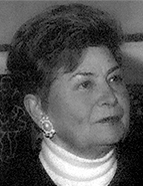

While working in the field in 1954, at the invitation of Manuel Heleno and Virgínia Rau, she was admitted as a second assistant, in addition to the permanent staff, to teach practical courses in General History of Civilisation, History of Eastern Antiquity (semester), History of Classical Antiquity (semester), Medieval History, Modern History, History of Portugal, History of the Portuguese Discoveries and Colonisation, Palaeography and Diplomatics, Epigraphy (semester), Numismatics and Sphragistics (semester) and Archaeology, subjects she taught over three academic years (A. H. Oliveira Marques, “Notícia histórica da Faculdade de Letras de Lisboa (1911-1981), pp. 183 and 186). She was one of the few women to teach History at the Faculdade de Letras [School of Arts and Humanities]. As she enjoyed university teaching, she began a doctoral project, which she gave up when she was dismissed in 1957, due to an unfavourable opinion from Manuel Heleno, the same professor who had contributed most decisively to her admission. Her academic training, now enriched by university teaching, combined with recognition for her work in archaeology, gave her unquestionable scientific authority as a historian. She did not let this adversity get her down. When she was dismissed from the School, she sought secondary school teaching and went on to teach in 1957-1958 at the Afonso Domingues Industrial School in Marvila, in evening classes “with students who came from the factories but really wanted to study” (Interview, p. 138).
Aware of her talents and attentive to opportunities for which she felt qualified, she had already begun to explore another professional possibility in 1953. Before entering university, she applied for an internship as an Assistant Curator of Museums, Palaces and National Monuments, which was open that year, and came first among the eight candidates admitted. In the 1953-1954 academic year, she took courses at the National Museum of Ancient Art and the Museum of Contemporary Art, under the guidance of their respective directors, Dr. João Couto and sculptor Diogo de Macedo; and in the 1954-1955 academic year, at the Dr. Leite de Vasconcelos National Museum of Ethnology, under the guidance of Professors Manuel Heleno and Scarlati Lambrino. She took her final exam with a thesis entitled Preliminary Project for the Archaeology Section of the Future Ethnological Museum of Dr. Leite de Vasconcelos.
This work is financed by national funds through FCT - Foundation for Science and Technology, I.P, in the scope of the projects UIDB/04311/2020 and UIDP/04311/2020.
